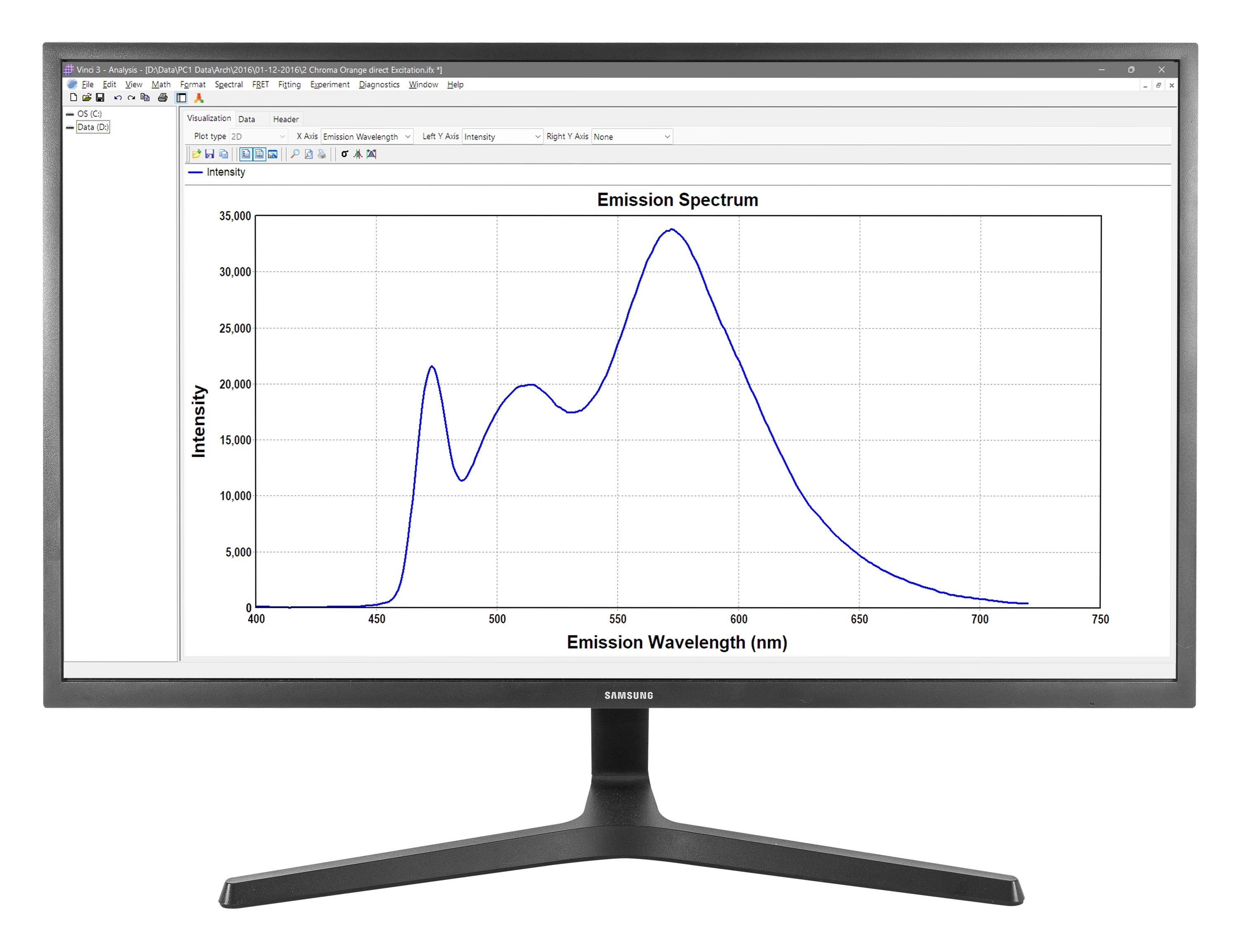Key Features of ChronosDFD

Frequency Domain Measurements

Maximum Sensitivity

Fully Automated

Integration of External Devices

Upgradeable
- Flexible instrument configuration with a variety of light sources (laser diodes, LEDs and Ti:Sapphire laser)
- A compact footprint and short optical path length for maximum sensitivity and efficient light coupling into the sample
- Second to picosecond lifetime measurement capabilities
- Full automation of instrument components including: cuvette holder, polarizers, shutters, filterwheel, monochromators and stirrers
- PC-controlled integration of temperature path, titrator, stopped-flow apparatus and pressure pump
- Upgradable to a full steady-state instrument
- T-format and parallel beam optical design for fast and precise polarization measurements
- Powered by Vinci-Multidimensional Fluorescence Spectroscopy
Key Characteristics of Data Acquisition via Frequency-domain with ChronosDFD
- Fluorescence lifetime is calculated from two measureable parameters: phase angle and modulation
- Is a faster and less artifact-prone
- Allows one step measurements of anisotropy decays (rotational correlation times)
- Is better at resolving short lifetime contributions
- Is the method of choice for lifetime-based sensing and real-time measurements because of high sampling rates in the millisecond time scale
The Data is Clear!

Fluorescein in Propylene Glycol
Frequency-domain anisotropy decays (differential polarized phase angle and amplitude ratio) of fluorescein in propylene glycol measured on ChronosDFD using an excitation wavelength of 470 nm (Xenon arc lamp). The emission was collected using a 530 longpass filter. Calculated values for θ = 5.3 ns with R0 = 0.40 and τ = 4 ns, T = 27-28°C.

BodipyFL in Water
Frequency responses (phase and modulation) of BodipyFL in water acquired on ChronosDFD using a 471 nm laser diode. The emission was collected through a 520 longpass filter. The data is best fitted with a single exponential decay time of 5.87 ns (χ2 = 0.97).









